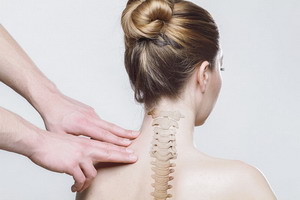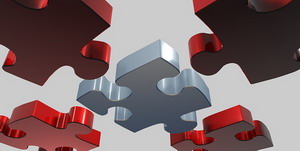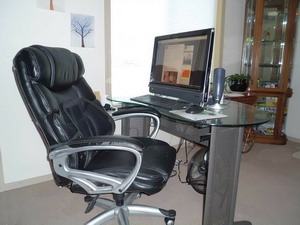 If you walk up to a wall or door, what touches you first, your nose, your chest, or your belly? We are talking about posture and balance today, with a focus on a concern many of you have mentioned to me. The question usually comes out as, “Do I have a hunchback?” The accurate term is a dowager’s hump or a head forward posture. A true hunchback is twisted to one side due to scoliosis in the spine in the upper back. Most of the time folks are asking about that hump at the top of the spine where the neck starts, commonly seen in older folks.
If you walk up to a wall or door, what touches you first, your nose, your chest, or your belly? We are talking about posture and balance today, with a focus on a concern many of you have mentioned to me. The question usually comes out as, “Do I have a hunchback?” The accurate term is a dowager’s hump or a head forward posture. A true hunchback is twisted to one side due to scoliosis in the spine in the upper back. Most of the time folks are asking about that hump at the top of the spine where the neck starts, commonly seen in older folks.
 To answer my initial question, if your posture is good, all three parts of your body will touch the wall at the same time. If your belly touches first, you probably have either metabolic syndrome or a swayback/hyperlordosis. Chest first would be unusual. Nose first is the situation we are concerned about today. Why would your nose be ahead of the rest of the body? We have all seen those old folks whose necks come out almost horizontally with the head hanging way out in front. Aside from it not looking healthy, what is the problem with this?
To answer my initial question, if your posture is good, all three parts of your body will touch the wall at the same time. If your belly touches first, you probably have either metabolic syndrome or a swayback/hyperlordosis. Chest first would be unusual. Nose first is the situation we are concerned about today. Why would your nose be ahead of the rest of the body? We have all seen those old folks whose necks come out almost horizontally with the head hanging way out in front. Aside from it not looking healthy, what is the problem with this?
 The muscles in the back of the neck that keep your head from flopping onto your chest pull down to between your shoulder blades. With the head balanced upright in good posture, very little force from these muscles squashes the neck vertebra together. As that head comes forward, more and more of that muscle force squashes those neck joints tightly together. This compresses the joints and as a result, compresses the nerves coming out of the spine in the neck. The first conditions I usually see are issues with the arms and hands. I find and numbness, wrist weakness, Carpal tunnel problems, elbow issues, tennis or golfers elbow, and all sorts of shoulder problems. The increased pressure on the joints gradually produces inflammation and joint degeneration. Eventually, the discs in the neck shrink or rupture and either surgery is necessary or the body tries to fuse the joints with arthritic spurs. The head forward posture degenerates the neck joints and produces lots of symptoms.
The muscles in the back of the neck that keep your head from flopping onto your chest pull down to between your shoulder blades. With the head balanced upright in good posture, very little force from these muscles squashes the neck vertebra together. As that head comes forward, more and more of that muscle force squashes those neck joints tightly together. This compresses the joints and as a result, compresses the nerves coming out of the spine in the neck. The first conditions I usually see are issues with the arms and hands. I find and numbness, wrist weakness, Carpal tunnel problems, elbow issues, tennis or golfers elbow, and all sorts of shoulder problems. The increased pressure on the joints gradually produces inflammation and joint degeneration. Eventually, the discs in the neck shrink or rupture and either surgery is necessary or the body tries to fuse the joints with arthritic spurs. The head forward posture degenerates the neck joints and produces lots of symptoms.
 Why does this happen? The short answer is that using your postural muscles requires energy, not a lot, but definitely some. Your postural muscles reflect your level of attention to your environment. Good posture signals that you are ready to respond or participate right now. When you are lost in your thoughts or focused on your phone or computer, those postural muscles relax and you slump into a posture that is determined by ligament and movement muscle tension. That is why an upright posture is seen positively. It signals to whomever you are with that you are attentive to them and ready to respond and participate. On the opposite side of the equation visually, when someone is down in the dumps and feeling withdrawn from the world, we see an exaggerated slumped forward posture. In general, folks just don’t muster the energy necessary to have good posture. Considering the health consequences, it is almost as though Mother Nature is telling us we need to pay more attention to those around us and less on ourselves.
Why does this happen? The short answer is that using your postural muscles requires energy, not a lot, but definitely some. Your postural muscles reflect your level of attention to your environment. Good posture signals that you are ready to respond or participate right now. When you are lost in your thoughts or focused on your phone or computer, those postural muscles relax and you slump into a posture that is determined by ligament and movement muscle tension. That is why an upright posture is seen positively. It signals to whomever you are with that you are attentive to them and ready to respond and participate. On the opposite side of the equation visually, when someone is down in the dumps and feeling withdrawn from the world, we see an exaggerated slumped forward posture. In general, folks just don’t muster the energy necessary to have good posture. Considering the health consequences, it is almost as though Mother Nature is telling us we need to pay more attention to those around us and less on ourselves.
 Over time the head forward posture becomes self-perpetuating as the muscles in the front of the chest and neck shorten and fibrous adhesions restrict movement. The pectoral muscles of the chest pull the shoulder blades forward and the shoulder joints pull inward along with the head. The upper back bends forward forming what is called a kyphotic curve. This throws the head even more forward causing the neck to shoulder muscles (the traps) to get chronically tight and painful. I work on tight traps every day. Those muscles love to hold onto any sort of stress.
Over time the head forward posture becomes self-perpetuating as the muscles in the front of the chest and neck shorten and fibrous adhesions restrict movement. The pectoral muscles of the chest pull the shoulder blades forward and the shoulder joints pull inward along with the head. The upper back bends forward forming what is called a kyphotic curve. This throws the head even more forward causing the neck to shoulder muscles (the traps) to get chronically tight and painful. I work on tight traps every day. Those muscles love to hold onto any sort of stress.
 Okay, so what can we do to change this muscle pattern? There are several pieces to this puzzle. Part is about stretching out the tight muscles and ligaments, another part is about strengthening the muscles that hold you upright, a third part is about the ergonomics of your work environment and phone use, and lastly, it’s about increasing your attention to the wide world around you. Rebuilding good posture is not like adjusting some part of your spine that is misbehaving. Posture involves placing some level of attention on your posture all the time, or at least until it becomes a completely new habit. As such, the techniques that work for building any new habit apply. Start small and make the first steps very easy to access. Fortunately, this is very easy to do with posture. For instance, I practice raising my chest enough to cause my head to touch the headrest in my car whenever I drive to work and home. That is only five minutes twice a day while I am doing something else I need to do anyway.
Okay, so what can we do to change this muscle pattern? There are several pieces to this puzzle. Part is about stretching out the tight muscles and ligaments, another part is about strengthening the muscles that hold you upright, a third part is about the ergonomics of your work environment and phone use, and lastly, it’s about increasing your attention to the wide world around you. Rebuilding good posture is not like adjusting some part of your spine that is misbehaving. Posture involves placing some level of attention on your posture all the time, or at least until it becomes a completely new habit. As such, the techniques that work for building any new habit apply. Start small and make the first steps very easy to access. Fortunately, this is very easy to do with posture. For instance, I practice raising my chest enough to cause my head to touch the headrest in my car whenever I drive to work and home. That is only five minutes twice a day while I am doing something else I need to do anyway.
For exercises and stretches, I will put a couple of links here to some youtube videos. I like Bob and Brad – the most famous physical therapists on the internet, because they are so downhome and quirky.
video 1
video 2
video 3
 Look for things to do that are easily doable in your home environment. You might find that obtaining some inexpensive rubber stretch bands to help you do different exercises useful. One thing to mention is that postural muscles are designed to hold steady, not move. So exercises of postural muscles work best when you tighten up and hold that posture for 8 to 10 seconds. Typical rapid contract-relax exercise do not do much for these muscles. Holding longer than 8 to 10 seconds also is not useful. Maximum benefit is gained in that 8 to 10 seconds. Repeat the hold several times.
Look for things to do that are easily doable in your home environment. You might find that obtaining some inexpensive rubber stretch bands to help you do different exercises useful. One thing to mention is that postural muscles are designed to hold steady, not move. So exercises of postural muscles work best when you tighten up and hold that posture for 8 to 10 seconds. Typical rapid contract-relax exercise do not do much for these muscles. Holding longer than 8 to 10 seconds also is not useful. Maximum benefit is gained in that 8 to 10 seconds. Repeat the hold several times.
 Ergonomics – that is an entire field of study. There are experts that come into your workplace and figure out what work setup is best for you. The basics are all about keeping your head level and not pulling your head forward. That means adjusting the height of your chair and desk surface so that with your head level your eyes are looking directly at the center of your computer screen. You want your shoulders relaxed and elbows at 90 degrees while typing. I often tell patients that if they feel like they want or need to lean forward to see the screen, well then, get some computer glasses to make the screen view clear.
Ergonomics – that is an entire field of study. There are experts that come into your workplace and figure out what work setup is best for you. The basics are all about keeping your head level and not pulling your head forward. That means adjusting the height of your chair and desk surface so that with your head level your eyes are looking directly at the center of your computer screen. You want your shoulders relaxed and elbows at 90 degrees while typing. I often tell patients that if they feel like they want or need to lean forward to see the screen, well then, get some computer glasses to make the screen view clear. Phone usage has become the newest nightmare for bent necks. Looking at a tiny screen in your hand all the time is terrible for your neck. I don’t have a good useful answer to the modern cell phone addiction. It will likely be keeping spine surgeons very busy in the years to come.
Phone usage has become the newest nightmare for bent necks. Looking at a tiny screen in your hand all the time is terrible for your neck. I don’t have a good useful answer to the modern cell phone addiction. It will likely be keeping spine surgeons very busy in the years to come.
The last component of the head forward epidemic involves a fundamental shift in what is important to us. Strangely these  last two years have been helpful in that regard. I have been seeing people out taking walks all over the place. This is perfect for helping head posture. Being out in nature and taking in the beauty of the bigger world helps set that head in a balanced position over the shoulders. Social interaction is another excellent way to help head posture as you listen to people and tell your story. Odd as it may seem, this even works while doing Zoom calls. If anything, the last two years have emphasized how important face-to-face contact is for us.
last two years have been helpful in that regard. I have been seeing people out taking walks all over the place. This is perfect for helping head posture. Being out in nature and taking in the beauty of the bigger world helps set that head in a balanced position over the shoulders. Social interaction is another excellent way to help head posture as you listen to people and tell your story. Odd as it may seem, this even works while doing Zoom calls. If anything, the last two years have emphasized how important face-to-face contact is for us.
 So get out and walk. Play golf. Get your feet wet at the beach. Just do stuff that you enjoy. We pay attention to things we enjoy, and paying attention is the big idea here. Enjoyment relaxes the shoulders into a back and down position which raises that head back over the shoulders where it belongs. How is that for therapy? Enjoy life more to fix your neck!
So get out and walk. Play golf. Get your feet wet at the beach. Just do stuff that you enjoy. We pay attention to things we enjoy, and paying attention is the big idea here. Enjoyment relaxes the shoulders into a back and down position which raises that head back over the shoulders where it belongs. How is that for therapy? Enjoy life more to fix your neck!
Take care,
David
